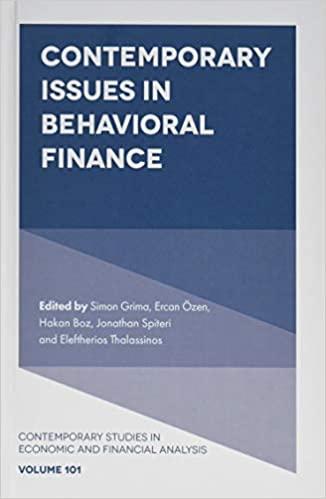Question
Consider the following cash flows: Year Cash Flow 0 $ 33,500 1 13,500 2 18,200 3 10,900 Requirement 1: What is the NPV at a
| Consider the following cash flows: |
| Year | Cash Flow | |||
| 0 | $ | 33,500 | ||
| 1 | 13,500 | |||
| 2 | 18,200 | |||
| 3 | 10,900 | |||
| Requirement 1: |
| What is the NPV at a discount rate of zero percent? (Do not include the dollar sign ($). Enter rounded answer as directed, but do not use the rounded numbers in intermediate calculations.) |
| Net present value | $ |
| Requirement 2: |
| What is the NPV at a discount rate of 9 percent? (Do not include the dollar sign ($). Enter rounded answer as directed, but do not use the rounded numbers in intermediate calculations.Round your answer to 2 decimal places (e.g., 32.16).) |
| Net present value | $ |
| Requirement 3: |
| What is the NPV at a discount rate of 19 percent? (Do not include the dollar sign ($). Enter rounded answer as directed, but do not use the rounded numbers in intermediate calculations. Negative amount should be indicated by a minus sign.Round your answer to 2 decimal places (e.g., 32.16).) |
| Net present value | $ |
| Requirement 4: |
| What is the NPV at a discount rate of 29 percent? (Do not include the dollar sign ($). Enter rounded answer as directed, but do not use the rounded numbers in intermediate calculations. Negative amount should be indicated by a minus sign.Round your answer to 2 decimal places (e.g., 32.16).) |
| Net present value | $ |
Step by Step Solution
There are 3 Steps involved in it
Step: 1

Get Instant Access to Expert-Tailored Solutions
See step-by-step solutions with expert insights and AI powered tools for academic success
Step: 2

Step: 3

Ace Your Homework with AI
Get the answers you need in no time with our AI-driven, step-by-step assistance
Get Started


